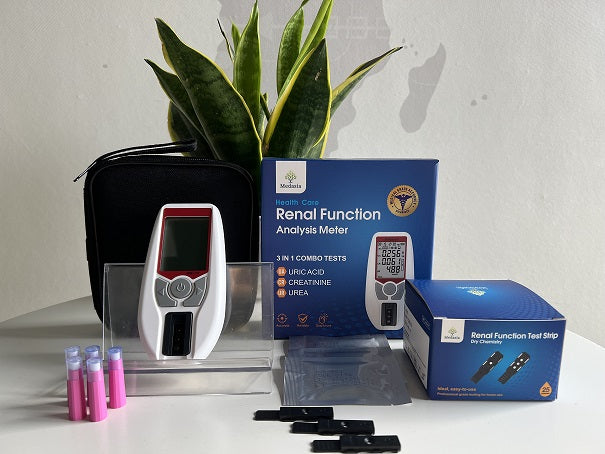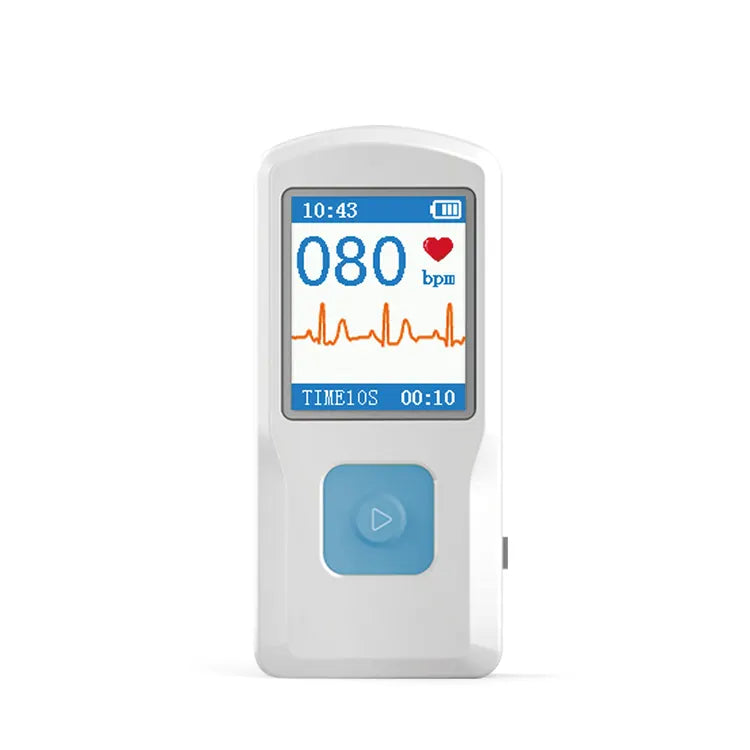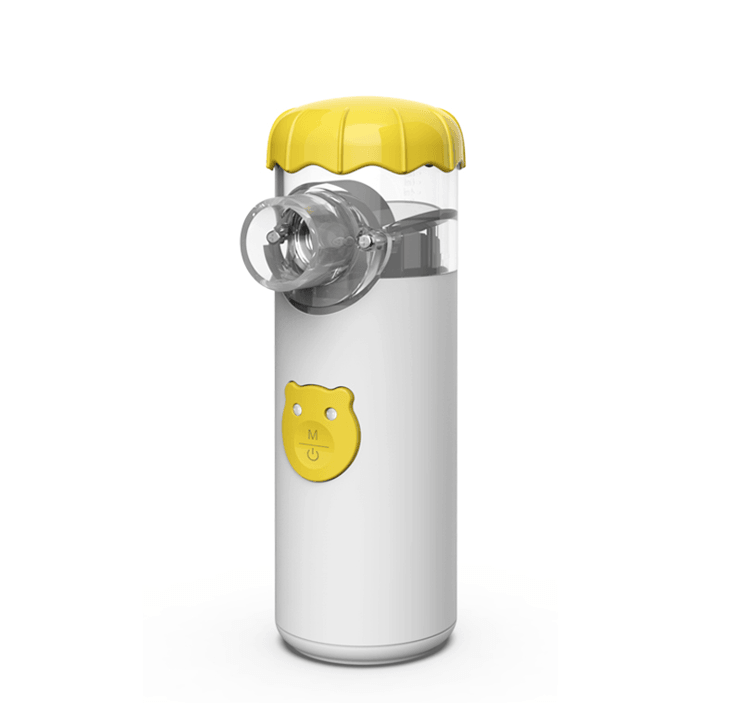New Tools to Detect kidney Disease Outside the Hospital


Global Facts: About kidney Disease
Kidney disease is a significant worldwide public health problem. Acute kidney injury (AKI) and chronic kidney disease (CKD) are linked to high health care costs, poor quality of life, and serious adverse health outcomes. 10% of the population worldwide is affected by chronic kidney disease (CKD), and millions die each year because they do not have access to affordable treatment. Over 2 million people worldwide currently receive treatment with dialysis or a kidney transplant to stay alive, yet this number may only represent 10% of people who actually need treatment to live. In people aged 65 through 74 worldwide, it is estimated that one in five men, and one in four women, have CKD. Noncommunicable diseases (such as heart disease, diabetes, or kidney disease) have replaced communicable diseases (such as influence, malaria, or AIDs) as the most common causes of premature death worldwide. An estimated 80% of this burden occurs in low- or middle-income countries, and 25% is in people younger than 60 years.
The most common kinds of kidney disease
- Chronic kidney disease: A major cause of chronic kidney disease is high blood pressure. Because your kidneys are constantly processing your body's blood, they touch 20 percent of your total blood every minute. High blood pressure is dangerous for your kidneys because it can lead to increased pressure on the glomerulus, which is your functional unit. Over time, this high pressure can damage your kidney's filtration unit and its function will decline.
- Kidney stones: Minerals and other substances in your blood may crystallize in your kidneys, forming solid particles, or stones, that are usually excreted in your urine. Excreted kidney stones can be very painful, but they rarely cause major problems.
- Glomerulonephritis: Glomerulonephritis (gloe-MER-u-loe-nuh-FRY-tis) is kind of kidney disease of the tiny filters in the kidneys (glomeruli). The excess fluid and waste that glomeruli (gloe-MER-u-lie) remove from the bloodstream exit the body as urine. Glomerulonephritis can come on suddenly (acute) or gradually (chronic).
- Polycystic kidney disease: Polycystic kinds of kidney disease can also cause cysts to develop in your liver and elsewhere in your body. The disease can cause serious complications, including high blood pressure and kidney failure.
Why is it important to check kidney function
How well your kidneys work is called kidney function. Your kidneys have the important job of filtering your blood. They remove waste products and extra fluid from your body. When your kidneys do not work as they should, waste can build up in your blood. This can make you sick. If you have long-term (chronic) kidney disease, you may not have any symptoms until your kidney function is very low. Blood and urine tests can help show how well your kidneys are working. They can help your doctor know better of your body .
The topic of this article
This article aims to highlight the benefits of renal function products and their crucial role in supporting individuals with renal diseases. Chronic kidney disease can be treated. With early diagnosis and treatment, it's possible to slow or stop the progression of kidney disease.
The company of Medasia
Medasia is dedicated to fostering global accessibility to healthcare by empowering individuals through self-care. Our ambition is to ensure that people worldwide have the means and knowledge to take control of their well-being.
Medasia, driven by innovation, specializes in self-tests for various medical conditions. We provide products that empower individuals to proactively manage their health conveniently and independently. Take the first step towards a healthier future with us.
For more information, visit www.medasiagroup.com
Kidney function goals
1.Uric Acid Test Normal Results
Most adults lose between 500 and 600 milligrams of uric acid in their pee every 24 hours. More than 800 milligrams is too much if you ’re eating a regular diet.
2.Creatinine Test Normal Results
Creatinine usually enters your bloodstream and is filtered from the bloodstream at a generally constant rate. The amount of creatinine in your blood should be relatively stable. An increased level of creatinine may be a sign of poor kidney function.
Serum creatinine is reported as milligrams of creatinine to a deciliter of blood (mg/dL) or micromoles of creatinine to a liter of blood (micromoles/L). The typical range for serum creatinine is: For adult men, 0.74 to 1.35 mg/dL (65.4 to 119.3 micromoles/L) For adult women, 0.59 to 1.04 mg/dL (52.2 to 91.9 micromoles/L).
3.Urea Test Normal Results
Normal values range from 12 to 20 grams per 24 hours (428.4 to 714 mmol/day). Normal value ranges may vary slightly among different laboratories. Some labs use different measurements or test different samples. Talk to your provider about the meaning of your specific test results.
How frequently do you need to measure eGFR?
- annually in all at risk groups
- during intercurrent illness and perioperatively in all patients with CKD. Exact frequency should depend on the clinical situation. The frequency of testing may be reduced where eGFR levels remain very stable but will need to be increased if there is rapid progression.

Reference:
(1) The Renal Association (May 2006).UK CKD Guidelines.
(2) NICE (September 2008). Chronic Kidney Disease - Early identification and management of chronic kidney disease in adults in primary and secondary care
The application scope for using a kidney meter

For organizations:
1.Hospitals: Kidney meters are extensively used in hospitals to measure kidney function through tests like serum creatinine and estimated glomerular filtration rate (eGFR). These measurements assist healthcare professionals in diagnosing acute kidney injury, chronic kidney disease, and other renal disorders. They also guide treatment decisions and monitor patients' kidney health during hospital stays.
2.Research Institutes: Research institutes utilize kidney meters to conduct studies related to kidney diseases, renal physiology, and drug development. These devices help researchers collect data for clinical trials, epidemiological studies, and other research projects focusing on kidney health.
3.Ministry of Health (MOH): Kidney meters play a significant role in public health initiatives undertaken by the MOH. They are used for mass screening programs to assess kidney function in specific populations and identify individuals at risk of kidney disease.
4.Clinics: Kidney meters are commonly found in medical clinics and primary care centers. They are essential tools for assessing kidney function during routine health check-ups and for monitoring patients with known kidney conditions.
5.Pharmacies: In certain healthcare settings, pharmacies may offer point-of-care kidney function tests using kidney meters. These tests can provide patients with immediate information about their kidney health, helping them understand their risk factors and seek further medical attention if necessary.
6.Kidney Function Centers: Specialized centers dedicated to kidney function testing and management utilize kidney meters extensively. These centers offer comprehensive renal function assessments and guide patients in managing chronic kidney diseases.
7.Physical Examination Centers: Kidney meters are commonly used in physical examination centers to assess kidney function as part of an overall health assessment. This information is valuable for identifying individuals with potential kidney issues and guiding further evaluation.
For Individuals:
1.General Practitioner (GP): GPs can use kidney meters to assess kidney function during routine health check-ups or when investigating symptoms that may indicate kidney-related issues. These measurements help in early detection and prompt management of kidney conditions.
2.Cardiologist: Kidney function is closely linked to cardiovascular health. Cardiologists may use kidney meters to evaluate kidney function in patients with heart conditions and determine appropriate treatment plans that consider both heart and kidney health.
3.Ophthalmologist: For ophthalmologists, kidney meters can be valuable in assessing kidney function as part of overall health evaluations for patients with certain ocular conditions, such as diabetic retinopathy or hypertensive retinopathy, which can be related to kidney disease.
4.Kidney Function Specialist: As specialists in kidney diseases, these professionals rely on kidney meters to monitor and assess kidney function in patients with chronic kidney disease, kidney stones, or other renal disorders. These measurements guide treatment decisions and help in disease management.
5.Nurse: Nurses can use kidney meters to perform kidney function tests, providing crucial information during patient assessments and health screenings. Regular monitoring of kidney function allows nurses to detect early signs of kidney problems and support patients' overall care.
6.Dietitian: Kidney function plays a role in determining dietary recommendations, especially for patients with kidney disease. Kidney meters help dietitians tailor nutrition plans that support kidney health while considering individual dietary needs.
7.Endocrinologist: Kidney function is essential in patients with endocrine disorders, such as diabetes or thyroid diseases. Endocrinologists may use kidney meters to evaluate kidney health and its impact on overall endocrine function.
8.Pharmacist: In certain healthcare settings, pharmacists may perform point-of-care kidney function tests using kidney meters. This helps identify patients at risk of kidney dysfunction and supports medication management based on renal function.
9.Kidney Educator: Kidney meters are valuable tools for kidney educators, enabling them to perform kidney function tests during educational sessions. This helps assess the effectiveness of education and lifestyle interventions in supporting kidney health.

How to choose a best kidney meter?
We chose several products related to kidney function to compare.By comparing the advantages and disadvantages of the function, finally choose the best renal function meter
①Choose Health 6-in-1 at-Home Kidney Test

This kind of kidney test with a finger prick test, only a couple of drops of blood is required for analysis. Blood sample is then sent for analysis in the pre-paid envelope provided in the kit. blood sample needs to send to the lab, it will takes 3-5 days to get results. And people will receive an email with a link about their anysis of results.
PROS
- 6-in-1 kidney health test, track 6 key markers of internal kidney health
- Tests are simple and easy
CONS
- Test results need 3-5 days to get
②Nova max pro creatinine and eGFR meter

The Meter is a hand-held testing device that measures Creatinine and eGFR levels in capillary whole blood obtained from the finger-tip.
PROS
- Large LCD, Clear to see the results
- Stores 400 dates
- Bluetooth connect, convenience to transport the date of results
- Rechargeable battery
- Nova’s FDA cleared statSensor creatinine enzymatic technology
CONS
- Only test for creatinine and eGFR levels
Very Good Correlation to Hospital Lab Analyzer
In a study performed for regulatory submission, 517 patients at three different sites had Nova Max Creatinine eGFR tests performed on fingerstick capillary blood samples. At the same time a venous blood sample was drawn and a laboratory analysis of creatinine/eGFR was performed. The creatinine method correlation was:

③Multifunction Kidney Function Meter
PROS
- Rapid test within 5 minutes
- 3 analysia items in 1 meter
- Rechargeable battery support longer life
- Bulk Memory, stores 500 groups of date with date and time
⭐Testing: Test for UA(Uric acid), CR(Creatinine), UR(Urea).
⭐Fast results: Test results for UA, CR, UR in 300 seconds.
⭐Portable: The device is designed to be lightweight and easy to carry around, making it convenient for use in various settings, including home, clinics, or even during travel.
⭐Easy to use: Just need 4 steps to get 3 results.
⭐Accurate: Precise results equivalent to automatic hematology analyzers, Wide measurement range: UA: 0.090mmol/L- 1.200mmol/L, CR: 0.044mmol/L- 1.320mmol/L, UR: 0.90mmol/L-40.00mmol/L.
⭐Covenient: Only 35 uL or 10uL capillary or venous blood required. Single-use dry strips allow forconvenient shipping and storage. Quick data transfer via Mini USB port and Bluetooth. Rechargeable battery economy, sufficient electricity.
Clinical Study objective:
The Renal Function Monitoring System is a quick, simple and reliable quantitative test to detect the concentration of Uric Acid(UA),Creatinine(CREA/CR) and Urea (UREA/UR) in peripheral and venous human whole blood, plasma and serum. The easy to operate system consists of a portable meter that analyzes the intensity and color of light reflected from the reagent area of a test device, ensuring quick and accurate results.
1. Instruction:
To perform a correlation study: Specimen Type: human serum Renal Function Monitoring System vs. Biochemical Analyzer determination method.

2 Correlation Study
2.1.The total amount of clinical specimens for this study is 57.
2.2.All the samples were collected in five separately days.
2.3.Perform the Renal Function Strips on one Renal Function Meter with clinical blood specimens. And record the test result.
2.4.Confirm the UA, CREA and UREA concentration of clinical blood specimen with Biochemical Analyzer.
2.5.Make three plots of the data. A scatter plot of the mean of Renal Function Monitoring System versus that of Biochemical Analyzer(UA/CR/UR).
Key factors to consider when purchasing kidney meter
What is the minimum order quantity (MOQ) for kidney meter ?
We support small quantity test order, and the price is negotiable for large quantity.
Delivery time for kidney meter ?
We can make the delivery within 30 days usually, But the actual delivery date can only be replied to you after we confirm with the factory .And sample delivery time needs to be confirmed too.
What certificates do you have for kidney meter?
We provide customers with CE, ISO, CHINA FDA ,FDA certification.
Do you offer customized packaging or branding options for kidney meter?
Yes, we offer customized packaging and branding options for the kidney meter. Please let us know your requirements so that we can provide you with a quote.
How about the packing for kidney meter ?
For meter size:135MM * 66MM * 19MM
For meter net weight: 90G
Would you send me a sample to check the quality before I order?
Sure. We would love to send you the sample ,even with logo if you can offer your artwork.
Payment options
Our payment terms and methods for international transactions are T/T ,LC ,Paypal and so on ,Please let us know your preferred method so that we can proceed accordingly.
How about the price of kidney meter?
Please contact with us at info@medasiagroup.com
How to ues a kidney meter?
Please ensure that the test strip, specimen, and/or controls are allowed to reach the operating temperature (between 10°C and 35°C) before commencing the testing process.
Refer to the Renal Function Monitoring System or Dry Biochemical Monitoring System User’s Manual or for detailed instructions.
1. Insert the code chip into the meter and code the meter correctly. Refer to Coding the meter section in the User’s Manual for details. Compare the code number on the code chip with the code number printed on the best at-home kidney test strip canister or foil pouch and ensure the two number are identical to avoid inaccurate results.
2. Check that the specimen type displayed on the meter LCD is same as the specimen type tested. If not, set the correct specimen type. Refer to the User’s Manual for details.
3. Remove the best at-home kidney test strip from the test strip canister or foil pouch.
4. Wait for the meter to flash the test strip symbol. Insert the test strip completely into the test strip channel in the same direction as the arrows printed on the test strip.
5. Prepare the specimen to be tested. For venous whole blood/plasma/serum specimens: mix the specimen for about 15minutes. For capillary blood specimen: wipe away the first drop of blood. Collect 35μL of the second or third drop of capillary blood specimen using a Capillary Transfer Tube or pipette. Refer to the User’s Manual for details. Hold the tube slightly downward and touch the tip of the Capillary Transfer Tube to the blood drop. Draw the specimen and stop drawing when the specimen comes to the fill line.
6. While the best at-home kidney test meter is flashing the blood drop symbol, apply 35μL specimen to the Specimen Application Area of the test strip using a pipette or Capillary Transfer Tube. Align the tip of the pipette or capillary Transfer Tube with the Specimen Application Area to apply the blood. 4 dashed lines will appear on the meter to show the test is in progress.
7.Read the results on the screen in 5 minutes. Refer to the User’s Manual for detailed test procedures.

When using a kidney meter
1.Cleaning: For best results, the kidney meter should be cleaned after each day of testing.
2.Battery check: If the meter uses batteries, check the battery status regularly. Replace the batteries when necessary to ensure uninterrupted operation.
3.Test strip check: If the cholesterol meter uses test strips, inspect the strips for any signs of damage, discoloration, or contamination. Only use test strips that are within their expiration date and stored according to the manufacturer's recommendations.
4.Avoid moisture: Keep the meter and its components away from water and moisture to prevent damage.
5.Storage: When not in use, store the cholesterolmeter in a cool, dry place, away from direct sunlight and extreme temperatures.
6.Follow manufacturer's instructions: Always adhere to the manufacturer's guidelines for cleaning, maintenance, and storage specific to your cholesterol meter model.
WE RECOMMEND
Related posts
- Subscribe MedInsights
- Subscribe MedInsights
- Subscribe MedInsights
- Subscribe MedInsights
- Subscribe MedInsights










